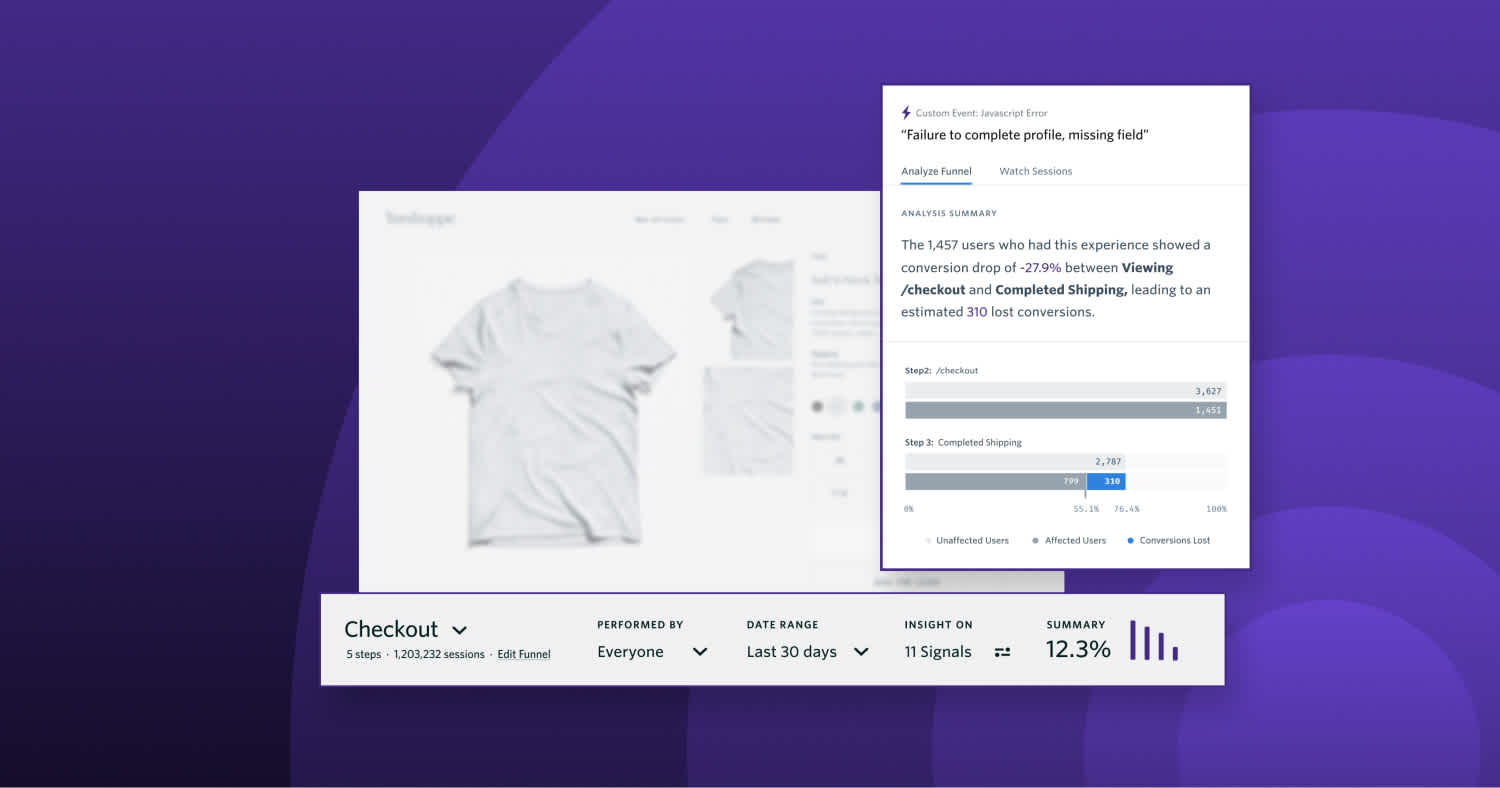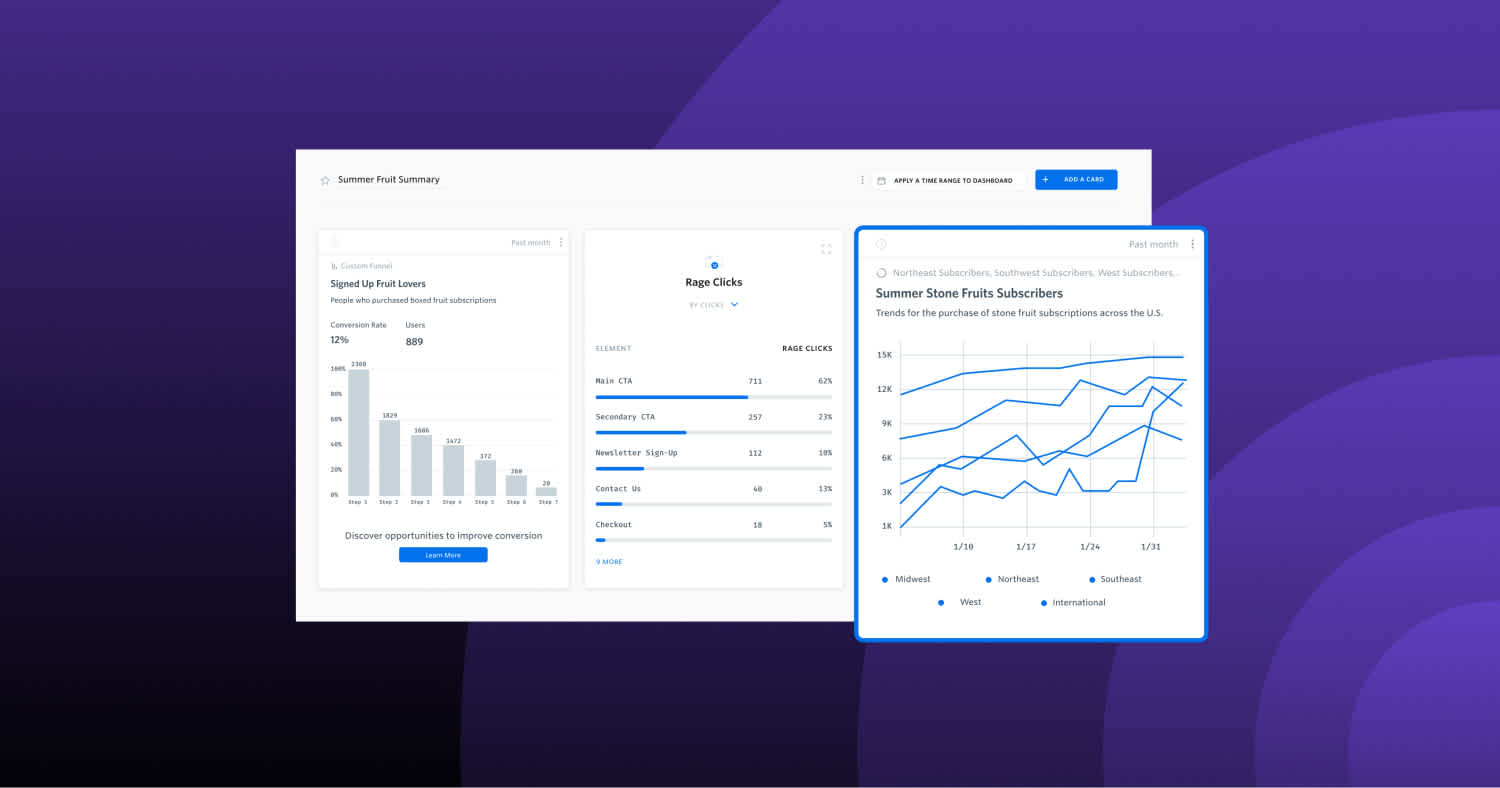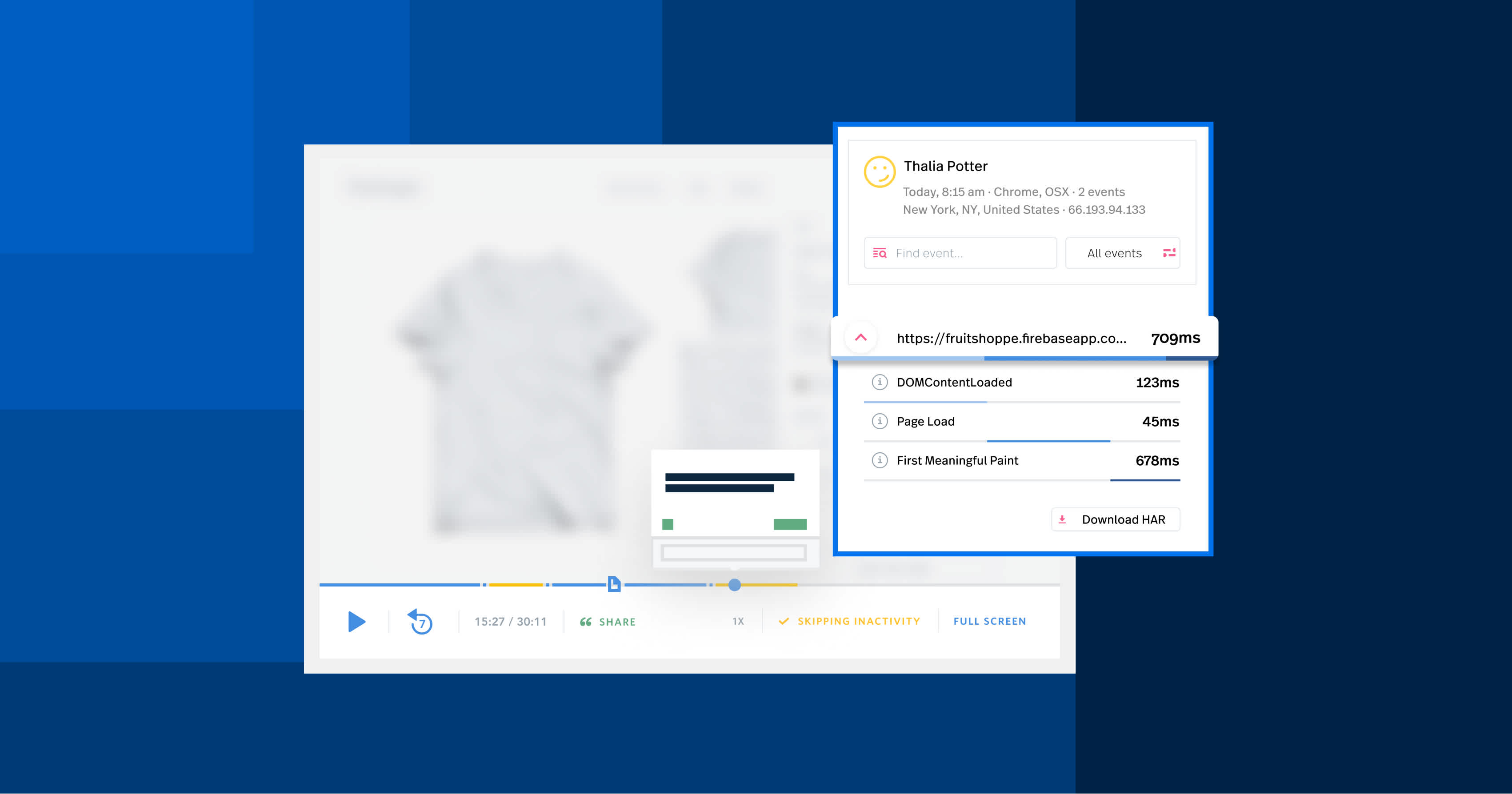Products make the world go ‘round.
As consumers, we purchase products every day to help us be more efficient, achieve goals, and even have fun. And how do we select products? By evaluating the quality, cost, and functionality of tools we need.
People who build products don’t just want to drive revenue; they want what’s best for customers. It’s critical to keep a pulse on a product to ensure it’s meeting the end users’ needs.
Conducting analysis on a product keeps the product connected to the user. It provides the data necessary to understand how people are using a product, where a product may be falling short, and helps to identify opportunities for improvement. The end result is a market-ready product that reaches the intended market and achieves the desired results.
Here, we cover product analytics, why it’s important, and what tools are best for the job—along with some frequently asked questions that will be answered.
Key takeaways:
Product analysis examines the product from beginning to end, examining components, functions, technology, costs, and demands as well as marketing materials and sales techniques.
Product analysis answers the question, what problem are we solving for the customer, and how can we solve it?
Product analytics can be derived from gathering customer feedback, surveys, or customer interviews.
What is product analytics?
Product analytics is the method of analyzing how users engage with a product. It offers insights into user behavior, product usage, and feature performance. It equips teams with data to enhance product development, improve user experience, and drive strategic decisions based on real usage patterns.
The term “product analysis” refers to obtaining and analyzing quantitative data through fixed product analytics tools that measure users' engagement with a product.
Companies use product analytics to optimize the user experience, identifying where the user is challenged, making improvements and merchandising features around the product. It offers a lot of information for product teams and tells you how, when, what, where, and who is using your product.
This type of data can include:
The most frequently accessed features of a product,
The average time users spend taking a specific action, and
A map of each user’s journey through the product.
Why is product analytics important?
Product analytics show companies what their users actually do by showing them their actions.
These are known as ‘revealed behaviors’ and are very telling for businesses everywhere. Data analytics allows teams to dig deeper into friction, motivations, and customer behavior to better their products.
Analytics can be a godsend for product teams. They can transform your ability to develop ideas and design user experiences. They let you imagine and create a product with features that match prospects' needs and then launch that product with measures in place to analyze its usage and service experience.
Because products are complex and often require many decisions to be made by many people, product analysis is also important for optimization, diagnosis, correlation and ensuring everyone is on the same page. They’re a product team’s dream come true.
Product analytics examples and metrics
Product analytics answers different types of questions, ranging from identifying trends and analyzing feature adoption over time to visualizing experiences and user flows inside or outside your product.
With good analytics, you can identify product trends and anticipate customer behavior. You can also understand and visualize engagement and user flows. By analyzing product performance, you will then be able to improve your product over time with data insights.
When it comes to measuring product success, you just need to identify which metrics will be useful for your team. Here’s a good start:
Business goals: Data about company and product performance.
Product usage: This section clarifies how users interact with your product and how the product team is progressing with features and upgrades.
Customer satisfaction: Metrics that help you understand whether customers are happy with their overall product experience.
Customer journey: Progress in the customer’s use of the product and engagement with the brand.
For reference, here are some examples of product analytics.
Trends analysis
Trends analysis is a type of reporting that outlines trends over time. It helps companies visualize whether feature adoption is increasing or decreasing.
A trends analysis is centered around one or more specific touchpoints in the user journey by zooming into their performance over time. Each department can benefit from trends analysis:
UX designers can zoom into specific features and visualize user configuration changes over time.
Customer support teams can understand user trends to prevent churn.
Product teams can identify the most and least used product features and how each feature’s usage compares to the past.
Sales and marketing teams can evaluate and improve the user journey by analyzing journey trends and conversions.
Journey analysis
The user journey—part of journey analysis—is the path taken by the user to reach their goal. It’s important to create a visual representation of the user's path—and this is where journey analysis comes in.
Customer journey analysis gains insights from historical customer and operations data, an approach that is especially helpful when identifying complex patterns in customer journeys.
This analysis is designed to be predictive, with the goal being to improve the customer experience. Similarly, there is an analysis of employee experiences that can help improve service levels.
Attribution analysis
Attribution analysis can help you identify the customer touchpoints most commonly associated with success.
To simplify, “attribution” means saying or thinking that something is the result of a particular person, action, or thing. When applied to data, you’ll want to know which data is contributing to a product’s success.
This type of data analysis interprets the user flow data and hones in on the users who have completed their journey. It then analyzes their touches in reverse.
For instance, a product manager can break down revenue generated by the most recent premium feature usage attempts before the conversion.
Cohort analysis
Cohort analysis takes data from a given subset and sorts it into related groups (known as cohorts), as opposed to looking at the data as one entity. The cohorts share similar characteristics, such as time, date, or size.
Businesses use cohort analysis to analyze customer behavior across the customer life cycle within specific segments and tailor their offers to those identified cohorts.
A cohort can be defined by different factors, such as:
When they first signed up
If they spoke to a salesperson
If they signed up for a paid subscription
Retention analysis
Customer retention analysis helps you understand how many of your customers return to your product over a period of time—on the first day, to weeks or months later.
Retention analysis can:
Measure user engagement over a period of time.
Compare the same metric over different periods of time.
Analyze various feature adoptions over a period of time.
You can use this data to develop retention strategies and analyze marketing analytics and efforts to improve customer lifetime value.
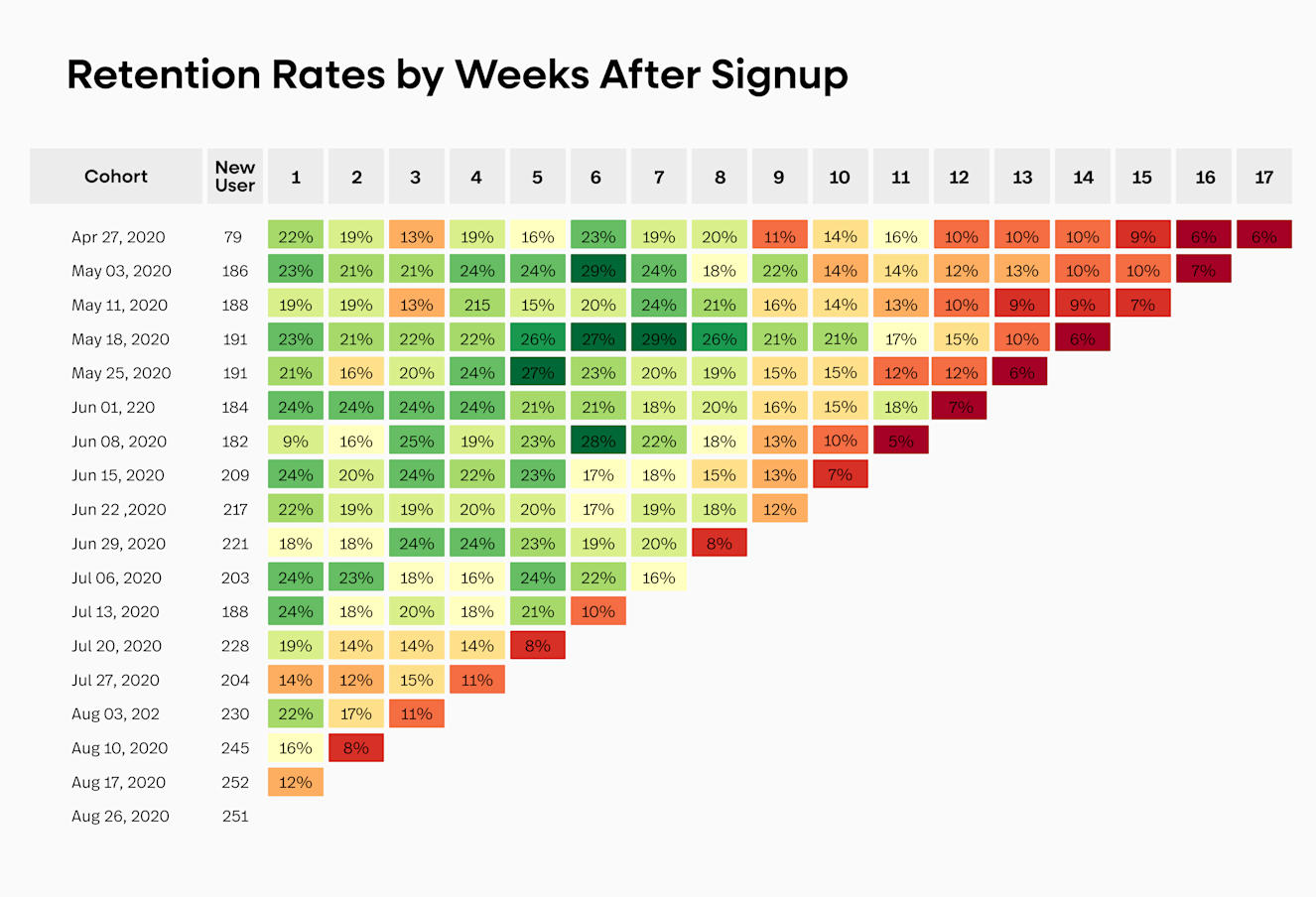
Churn analysis
Churn analysis shows you how many people are sticking with or abandoning your product. This type of analysis looks across time periods to determine customer retention trends and/or losses over time.
Historically, the process has been to conduct monthly churn analysis for recurring subscription-based companies. The goal is to watch and analyze trends monthly to decrease churn.
Funnel analysis
Funnel analysis is an analytics method that shows the conversion of the most important steps of the user journey. It helps to understand what percent of your users stay with you or churn—pertaining to the steps of the user journey.
There are three common funnel analysis types:
Sales funnel analysis
Onboarding funnel analysis
Conversion funnels allow you to visualize and measure user progress through a series of steps (from registration to product adoption). Analyzing these funnels can identify new opportunities for improvement and growth.
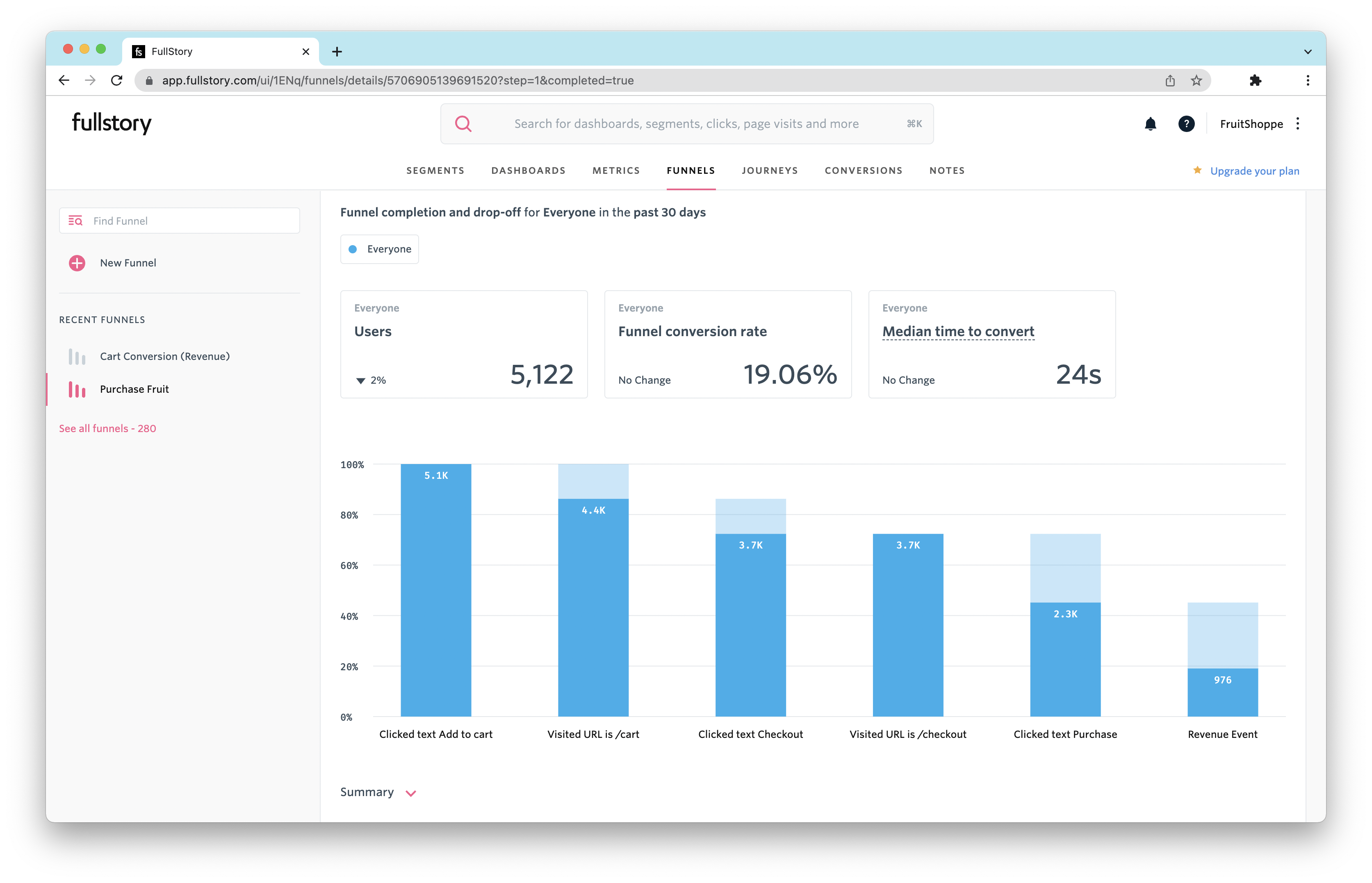
Conversion analysis
Conversion analysis is the process of interpreting data related to all conversions. A conversion is defined as a specific, desirable action taken by a website user.
Conversions are a core metric that every business uses to improve revenue generation, customer retention rates, and product growth. They gauge a business’s overall performance.
Conversions for an e-commerce company may be represented by checkout. For a SaaS company, conversions can include free-to-paid subscriptions, upgrading tiers, or performing a specific action.
Conversion drivers analyze all the in-between factors leading up to the desired action. Typically, a conversion is linked to one of the following things:
Providing contact information
Signing up for a subscription
Purchasing a product
Creating an account
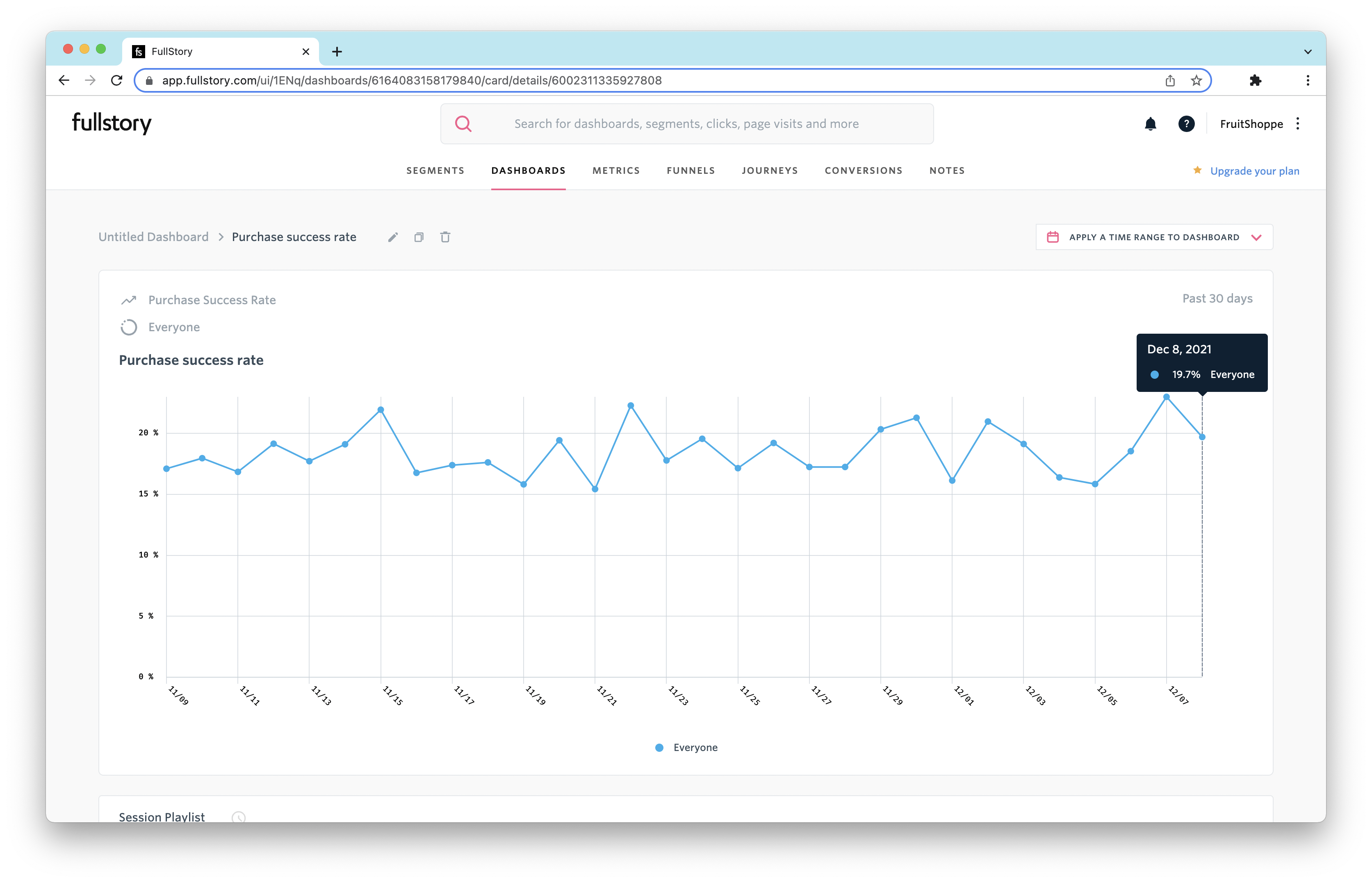
Further reading: How conversion analysis works in Fullstory
Milestone analysis
There are milestones in the customer journey that drive new users to become high-value customers, and there are milestones that could potentially cause a customer to churn.
You might know your milestones and need to validate your assumptions. On the other hand, you might need to explore your product data to uncover those customer milestones.
For instance, a customer milestone could be when they reach their "aha moment” and fall in love with your product.
With milestone analysis, you can identify the actions that your high-value customers take and encourage more users to follow the same path.
Some examples of milestones are:
Subscribers watching their first or fifth video
A customer renews their account
The number of products an online shopper views before purchasing
Get state-of-the-art product analytics with Fullstory
Out of the box, Fullstory offers funnel analysis capabilities that are flexible, powerful, and instrumentation-free.
Customer experience analysis
The customer experience follows the entire customer journey, though the path is rarely linear.
Customer experience analysis looks at all touchpoints from your initial marketing efforts through ongoing retention and brand loyalty.
To measure and analyze the customer experience, you need to:
Identify the ideal experience for your customer to measure
Define the key touchpoints in their journey that you want the experience to be measured
Collect customer feedback and insights from the journey
By understanding what personalization tactics drive customers to take specific actions within your product, you can use A/B testing to encourage other customers to do the same.
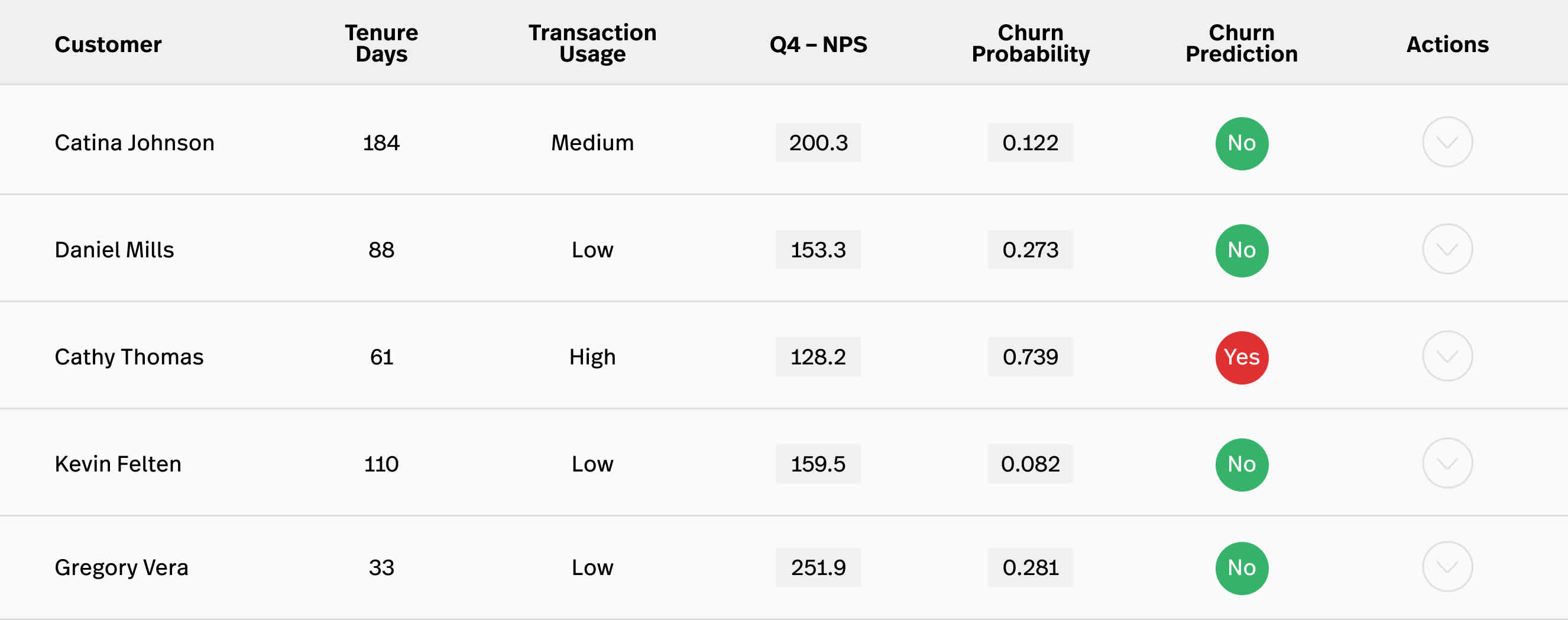
How to be successful with product analytics
Successful companies offer analytics to all departments. If you don’t have a product analytics platform, follow these six steps to start analyzing today.
Promote cross-functional collaboration
Your technical team may be focused on making the product scalable; the marketing team wants to shorten the average time it takes a customer to convert, and you want your teams to embrace the collaboration product analytics will provide.
The key in utilizing product analysis is to promote cross-functional collaboration for your team to remain focused on the overall goal by:
Bringing your team in on customer trends, product feature responses, industry-wide market swings, and more.
Conducting meetings, employee feedback, and surveys to be sure the different teams are on the same page.
Prioritize data management
Data management refers to the practice of constructing and maintaining a framework for absorbing, storing, mining, and archiving data. Data management is the root that connects all segments of the information lifecycle.
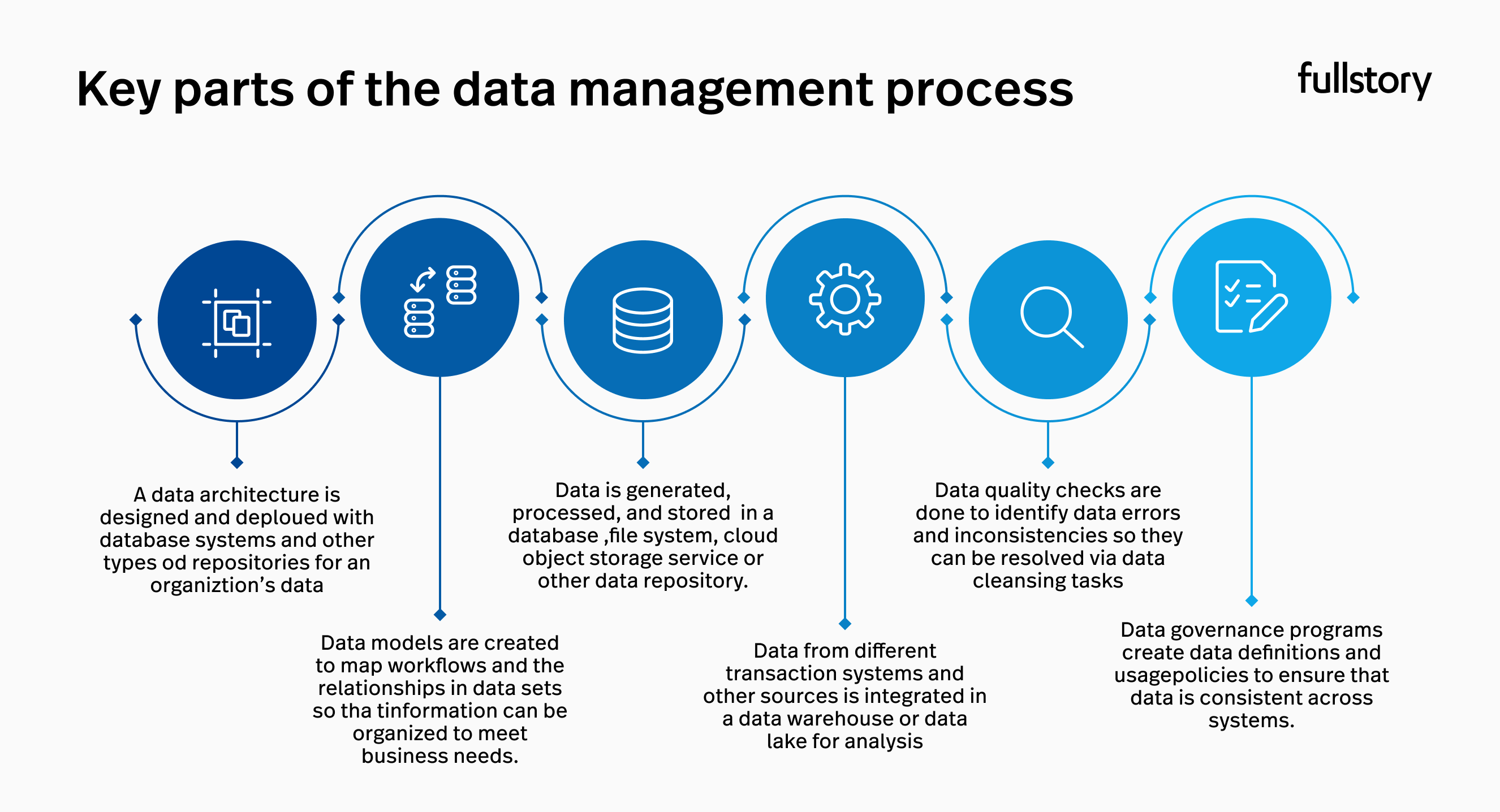
Identify what data will be collected for your product analytics and how it will remain accurate and trustworthy. Typically, there are seven types of data management to consider:
Master data management is the process of establishing the data the organization uses and making decisions based on a unified version of “true” information.
Data stewardship is a digital sheriff who watches over data collection and movement policies, ensuring practices are implemented and rules are enforced.
Data quality management is responsible for combining collected data to solve problems such as duplicate records, inconsistent versions, and more.
Data security specialists are tasked with managing data encryption, preventing unauthorized access, and guarding against accidental movement or deletion and other concerns.
Data governance is a constitution that clearly outlines policies for the intake, flow, and protection of institutional information. Data governors oversee their network of stewards, quality management professionals, and security teams.
Big data management is the term for gathering, analyzing, and using massive amounts of digital information to improve operations and processes.
Data warehousing provides the physical and/or cloud-based infrastructure used to aggregate raw data and analyze it.
Store your product analytics data so that it’s organized, clean, and prevents data silos.
Plan your product analytics instrumentation
You’ll need to influence stakeholders to approve product feature updates, so you’ll need to plan your product analytics instrumentation.
Engagement and analytics solutions help you get answers to all your questions related to the usage of your product. To do this, you’ll need to map out your entire product so that you can answers all your questions before they’re asked. This process of mapping the product is called product instrumentation.
You can map out your product in two ways:
Create a product tree showcasing the various layers of the product and its features.
Create mapping workflows where you map the product based on what it looks like, the way you describe it, and the way the data is implemented in the user flow.
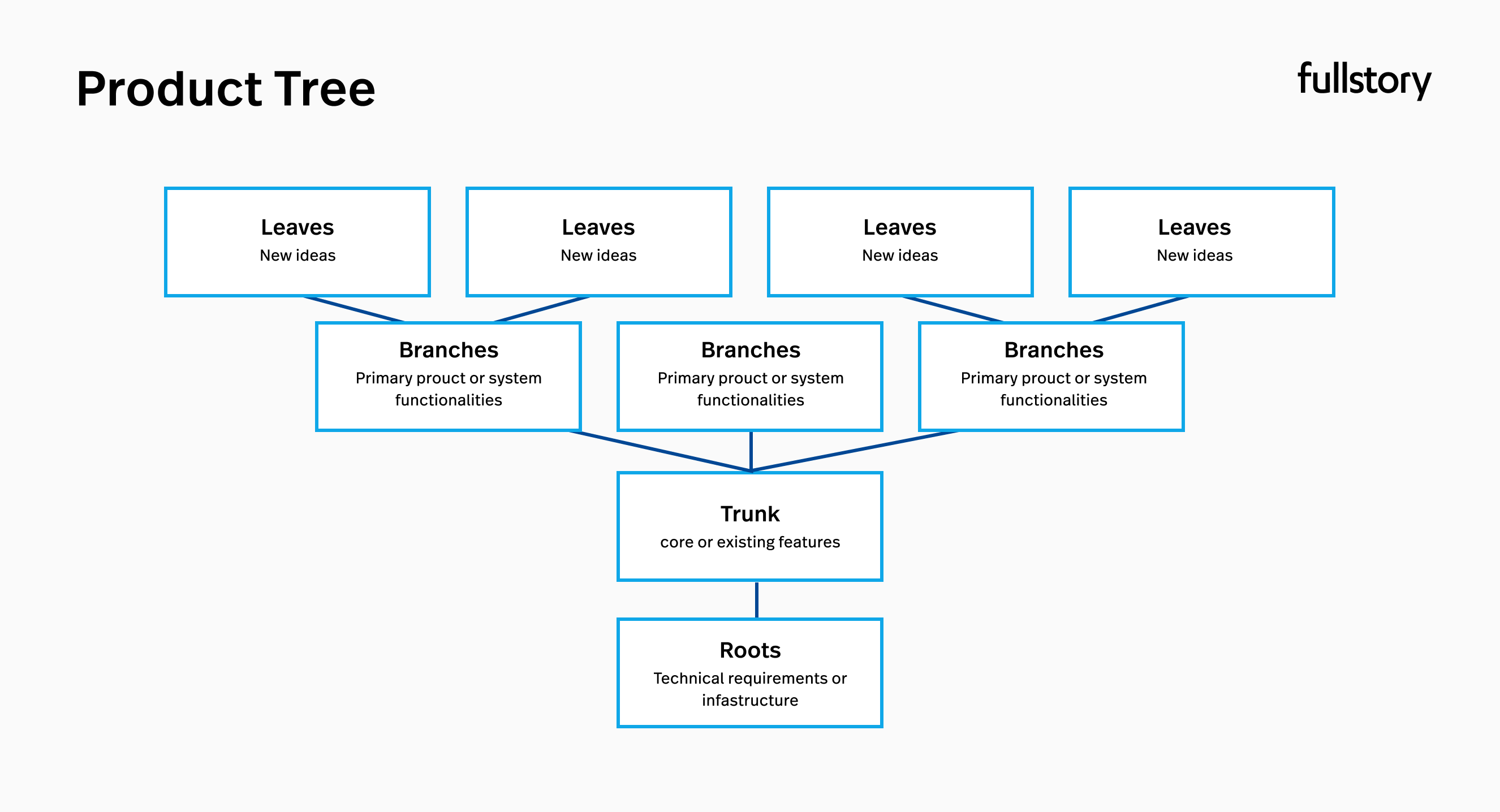
Implement effective data governance
Data governance is everything you do to ensure data is secure, private, accurate, available, and usable. Data governors are responsible for setting standards for data usage and educating teams.
Throughout the data lifecycle, data is governed by the actions, processes, and technology used,
To implement effective data governance, you’ll need to ensure data is accessible to all teams.
Connect multiple products through integrations
Integrate your product analytics platform with popular tools to combine disparate data sets and form a complete picture of your customers. Here are popular integrations to consider:
Salesforce CRM integration can analyze accounts and create group-level properties.
Zendesk integration lets your organization share all user data for full-circle tracking.
Amazon Redshift integration allows ad hoc queries without ETL processes.
MParticle integration can track events and users along the entire customer lifecycle.
Facebook Ads integration can create custom audiences from behavioral data.
Learn from success stories
What better way to analyze your product than to learn from users or customers who use it correctly?
Case studies, customer testimonials, and interviews offer great insight into how businesses have used product analytics.
Product analytics compared to other solutions
Product analytics offer a more comprehensive solution for understanding user behavior than some stand-alone tools like web and mobile analytics.
This is because it includes behavioral data and has more flexibility to act on insights.
Business intelligence tools are best for strategizing, not tactical, actionable insights for a product.
Data management platforms are good for data retention but are not good for granular user analysis.
Web analytics tools are best for optimization and scaling, but they are not suitable for understanding user intent. User intent is usually determined by collecting qualitative data.
Comparison guide: Product analytics and digital experience intelligence
In today's fast-evolving ecosystem of software designed to optimize the digital customer experience, it's easy to get lost in a landscape of tools that seem similar. Do you need product analytics or digital experience intelligence? Or, maybe even both?
Who uses product analytics?
Product analytics is a way to use data to improve product decisions—both in the short and long term. There are many teams—and stakeholders within those teams—that can benefit from a product analytics solution, including:
Leadership, to evaluate product performance in relation to business goals.
Marketing, to better understand customers and why they take certain actions by segmenting behavior.
Customer success, to monitor engagement and inform customer conversations on how to use the product more efficiently.
Product managementis used to make decisions about the product roadmap and to better understand who your customers are and how they interact with your product.
Engineering, to identify and prioritize problematic gaps or areas of friction.
Design to identify and improve the user experience.
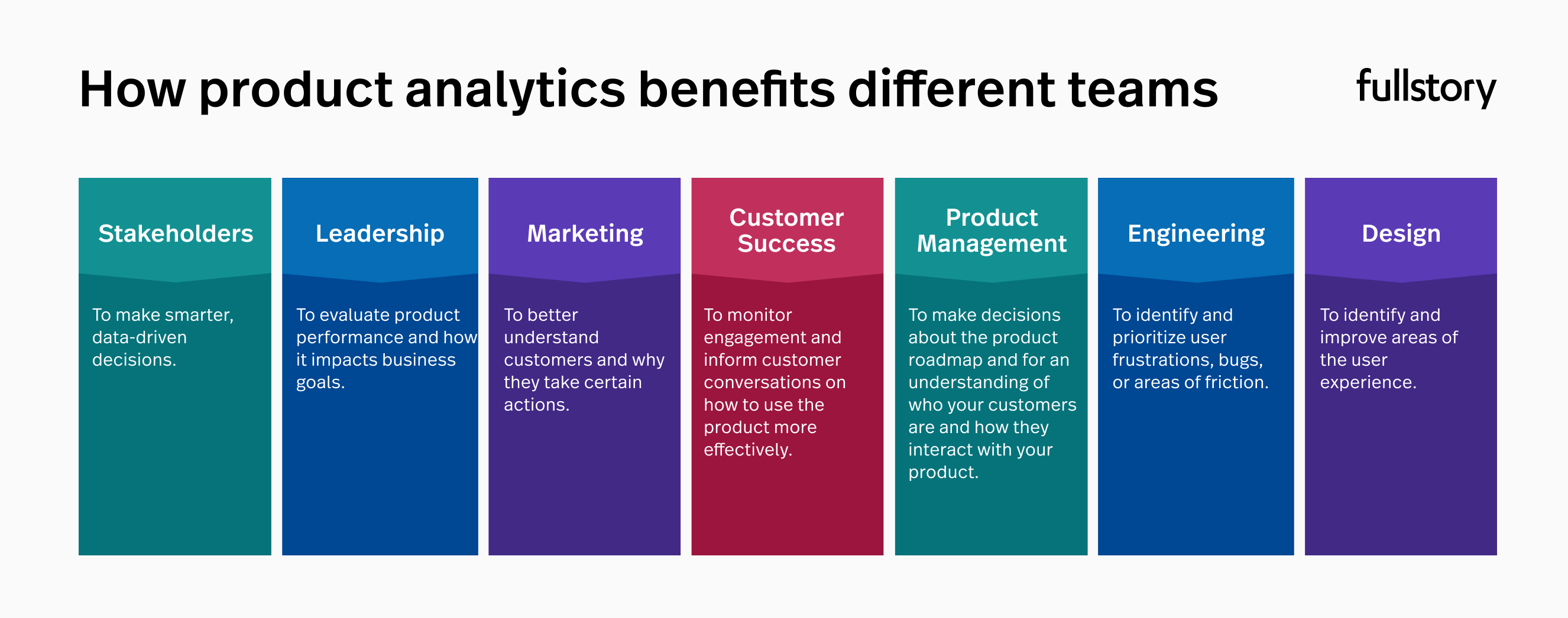
How do product analytics platforms work?
A product analytics tool tracks users' actions on your site or app—clicks, page views, form fills, swipes, and other activities involved in navigating a digital product. Each can be customized to report on your team’s main KPIs and metrics.
Product analytics tools capture data by tracking user actions. Here are examples of product analytics tool features:
Attribution analysis: Analyze customer touchpoints that lead to a purchase.
Funnel analysis: Map the customers' journey across the buyer stages that lead to a goal to understand points of friction or churn.
Conversion analysis: Evaluate desired conversion actions or drop-off discovery.
Segmentation: Divide customers into groups based on demographics, behavior, and more to expose deeper insights.
Cohort analysis: Measuring behavioral patterns over time by separating users into related groups or cohorts.
Churn analysis: Examine customer churn rate in an effort to understand what causes customers to leave.
Retention analysis: Understand the factors that attract customers to stay—the inverse of churn analysis.
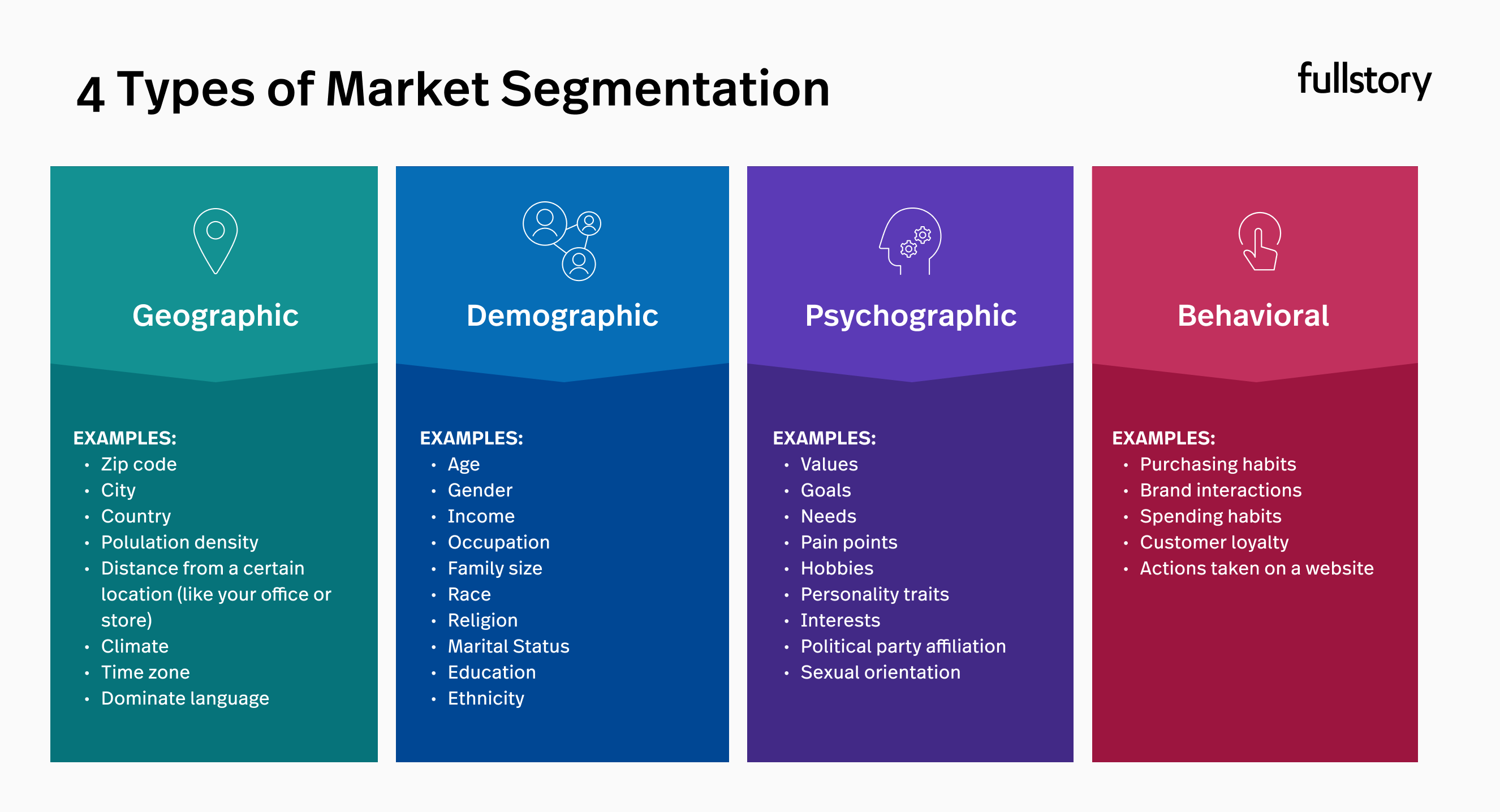
Many tools also help you better understand your qualitative data through session replay, user surveys, and more.
A great analytics tool will give you the following capabilities:
Tracking that can be automatically applied to user actions across your sites and apps.
Segmentation teaches you who users are, where they came from, and what they do in your experience.
Notifications and alerts to monitor critical changes in user behavior.
Collaboration tools that help you align teams around your data. Session replay to see view recordings of your users’ sessions.
Dashboards allow you to visualize data in useful and revealing ways.
Funnels can be set up to explore different paths to conversions.
Heatmaps to see which parts of your products users use.
A/B testing compares versions of messaging and features for effectiveness.
Measurement tools allow you to evaluate each feature’s user engagement.
When should my company invest in product analytics?
Product analytics can benefit your organization any time you wish to improve the user experience. Here are a few reasons you may need to implement product analytics.
When you’re curious about the experiences users have on your site, and concerned with making them better.
When you want to build a product, people like—or better yet, love.
When you want to scale properly, develop your data value chain, increase user retention and conversion rates, and lower customer churn.
When you want to perfect your data storytelling and ensure that you continue to evolve with the market.
How do I choose the right product analytics tool?
When choosing a product analytics platform, start with the end in mind. Based on your company’s objectives, choose a tool based on your business goals and Key Performance Indicators (KPIs).
Be as granular as possible to get the most information, and be open to exploring and willing to try new things.
Top product analytics tools
Whether you're looking for a general analytics solution or specialized retail and ecommerce analytics, here are some of the top tools to consider:
Fullstory
Fullstory is a behavioral data platform designed to help companies answer questions they have about customer experience.
Built on a powerful analytics engine, the behavioral data platform delivers a retroactive view of how people interact with your site or app and connects customer interactions to the metrics that matter.
Google Analytics
Google Analytics is a major player in the analytics space. It offers a low-cost solution to monitor user traffic and general product usage. GA’s main strength is its integration with Google’s offerings and other tools that gather data from your tech stack.
Mixpanel
Mixpanel is a product analytics software, that enables teams to learn from their user data and innovate to create winning products.
Mixpanel offers a variety of solutions to help measure and predict customer usage across unique segmentation needs.
Amplitude
Amplitude is a product analytics tool that helps product teams understand customers while continuously providing insight to ensure proactive retention. Amplitude offers a variety of visuals and data-tracking options that can track high-level KPIs down to granular metrics.
Pendo
Pendo is a growing product analysis and adoption platform that captures quantitative insights, direct customer feedback, and general product metrics across web and mobile applications.
Heap
Heap is a product analytics tool that helps tell the story of user behavior. By tracking user events, product managers can segment and review customer experiences throughout the product with Heap.
Winware
ImpactProduct is a product analysis tool designed to understand how user behaviors are driving business goals. It’s known for its easy-to-use extension designed for anyone on your team, not just highly trained data analysts.
Get more than just product analytics with Fullstory
A smooth digital customer experience is often the difference between success and failure for a business. And the first step toward building that experience is understanding who your customers are, what they want, and how to provide them what they need.
Access to product analytics is the most efficient and reliable way to collect valuable data around funnel analysis, customer journey maps, user segments, and more.
But quantitative data isn’t enough. Creating a perfect digital experience for your customers means knowing what is and isn’t working—and why.
Fullstory's DXI platform combines the quantitative insights of product analytics with picture-perfect session replay for complete context that helps you answer questions, understand issues, and uncover customer opportunities.
To see how Fullstory can help you combine your most invaluable quantitative and qualitative insights and eliminate blind spots, sign up for a 14-day free trial today.
